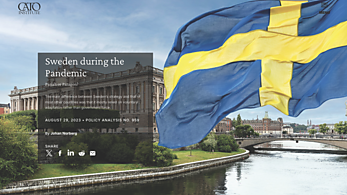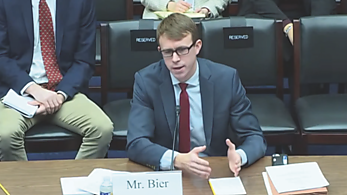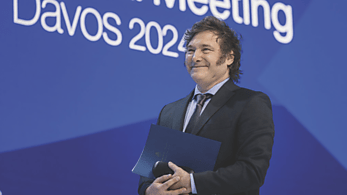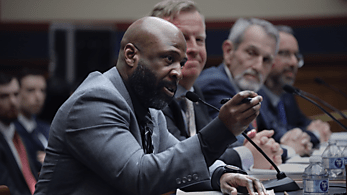erman philosopher Hannah Arendt wrote in the early 20th century, “Truthfulness has never been counted among the political virtues, and lies have always been regarded as justifiable tools in political dealings.”
A single nugget of truth can catch the eye of thousands when falsehoods are so prevalent. Cato’s reputation for principled research, and for telling the truth as we see it regardless of political expediency, attracts more than 11 million visits to its websites annually.
These were some of the most visited articles, studies, and publications on Cato’s website in the past year that cut through the polarization and noise to convey important facts and insights.
Sweden during the Pandemic: Pariah or Paragon?
Johan Norberg, a senior fellow and author of The Capitalist Manifesto, demonstrated how Sweden’s approach to the pandemic—largely staying open as other countries shut down—resulted in a more resilient economy, less learning loss for children, and fewer excess deaths than any European country. Yet there remains a common perception that Sweden’s deference to voluntary adaptation resulted in disaster.
Nearly 60,000 people have read the online version of Norberg’s August 2023 Policy Analysis, “Sweden during the Pandemic.” His research was seen by thousands more in The Atlantic, in the Boston Globe, on AOL.com, and more.
Fentanyl Is Smuggled for US Citizens by US Citizens, Not Asylum Seekers
Immigrants are a convenient scapegoat for America’s fentanyl crisis. In 2023, 39 percent of Americans and 60 percent of Republicans incorrectly believed that “most of the fentanyl entering the US is smuggled in by unauthorized migrants crossing the border illegally.” Now, when you perform Google searches such as “immigrants fentanyl,” director of immigration studies David J. Bier’s blog posts are among the top hits, including “US Citizens Were 89% of Convicted Fentanyl Traffickers in 2022.”
The blog post was seen more than 100,000 times in the past year and his writing on fentanyl was cited nearly 40 times on television, including by eight members of Congress during hearings and interviews.
“Congress increasingly evades spending limits by using emergency spending designations for nonemergency expenses. By 2029 we will have the highest debt-to-GDP ratio in our country’s history: 106 percent, reaching 181 percent in 2053.”
Curbing Federal Emergency Spending
Congress has a spending problem, and Cato is showing how it can help kick the habit. One reason the federal budget is ballooning is that Congress increasingly evades spending limits by using emergency spending designations for nonemergency expenses.
The office of Sen. Rand Paul (R‑KY) included a chilling spending chart from Romina Boccia, director of budget and entitlement policy, and research associate Dominik Lett, in its latest “Festivus Report” on federal spending. The chart, Figure 3 in Boccia and Lett’s January Policy Analysis “Curbing Federal Emergency Spending,” demonstrates our debt trajectory. By 2029 we will have the highest debt-to-gross domestic product ratio in our country’s history: 106 percent, reaching 181 percent in 2053. Sen. Paul’s account on X has nearly 200,000 followers, and Cato shared the policy analysis with 1,800 Hill staffers.
Yes, Javier Milei Really Is a Libertarian
Lazy reporting around the world conflated Javier Milei, Argentina’s new president and a genuine classical liberal, with illiberal leaders such as Jair Bolsonaro, Geert Wilders, and Donald Trump. Cato’s analyses of Milei and his free-market reforms have received nearly 50,000 views on its website since his historic run. Several Cato scholars, including distinguished senior fellow David Boaz, vice president Ian Vásquez, policy analyst Daniel Raisbeck, and fellow Gabriela Calderon de Burgos, have also written about Milei in the Washington Post, Reason, Quillette, and other news outlets.
Milei cited Argentina’s preeminent classical liberal economist and Cato adjunct scholar Alberto Benegas Lynch Jr. during his speech in Davos (watched by millions) and has promoted multiple Cato blog posts and articles to his 2.5 million X followers. In June, Milei and other leading classical liberals will convene in Buenos Aires for a conference cosponsored by Cato, “The Rebirth of Liberty in Argentina and Beyond.”
What Would a US War with China Look Like?
Whether and to what extent the United States should use military force to defend Taiwan against a Chinese invasion have become prominent questions in Washington. Xi Jinping’s US visit in November 2023 increased attention on the issue, as he and President Biden attempted to restore lines of communication that China severed the previous year in response to then House Speaker Nancy Pelosi’s visit to Taiwan.
One of the 10 most-viewed pages on Cato.org in 2023 was senior fellow Doug Bandow’s “What Would a US War with China Look Like?,” which was originally published in 2022 and has since received 100,000 views. It is essential that Americans have a clear view of the dangers and costs of a US-China war over Taiwan, which would not be easily contained and could lead to nuclear warfare, Bandow argues. Cato’s foreign policy scholars are ensuring that policymakers and the public alike have all the facts when considering potential action.










